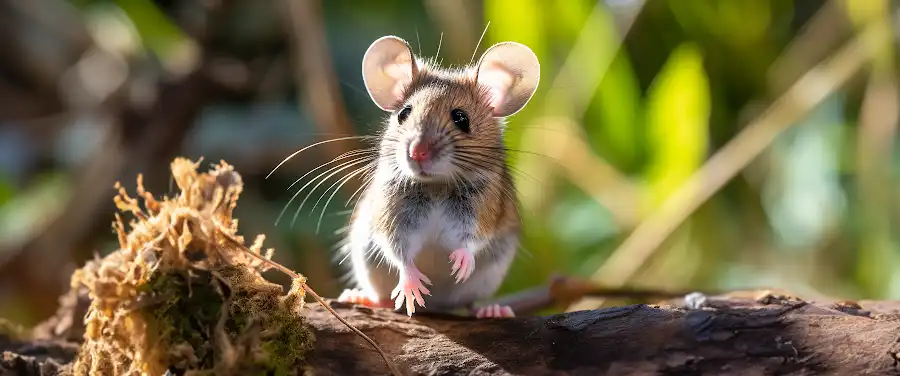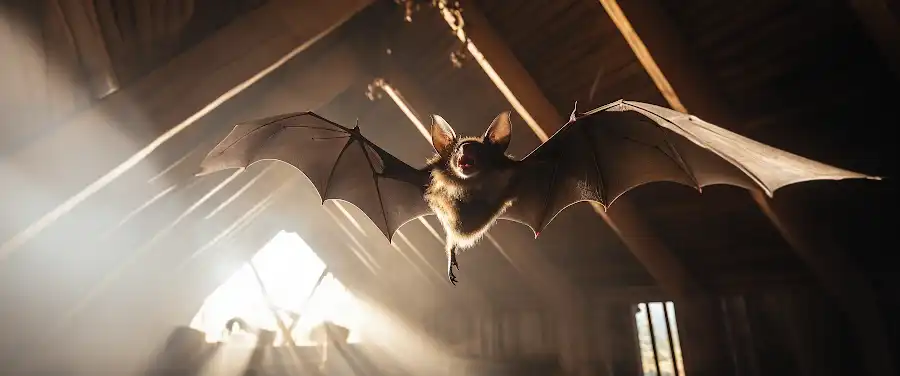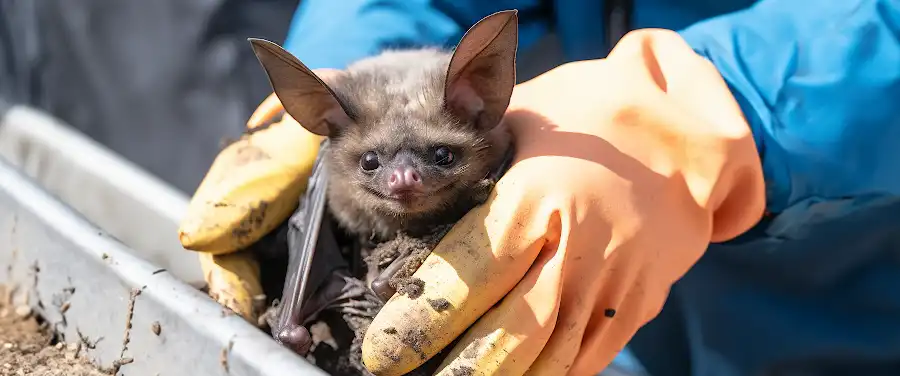
Say hello to Central Florida, a picturesque paradise for outdoor enthusiasts, boasting sandy beaches, enticing amusement parks, and…rodents? Yes, you heard right. In the heart of the Sunshine State, there exists a curious array of these much-misunderstood creatures, much to the fascination and often frustration of residents and researchers alike. They scamper, they squeak, and they snuck into corners uninvited. Certainly not the type of wildlife you had in mind while picturing a day on the streams or under the palms, but their presence is undeniable, and their diversity, downright intriguing.
Let’s embark on an exploratory ramble through Central Florida’s ‘squeaky’ scene without cracking open your old biology textbooks or donning a zoologist’s cap. Though you might instinctively recoil at the mention of rodents, it’s crucial to remember that they’re an integral part of Florida’s ecosystem, having a major role in maintaining the delicate balance of their habitats. Their presence, or absence, as the case may be, often reflects on the health and stability of their particular ecosystem. This makes rodents a fascinating study when it comes to understanding local biodiversity or rodent diversity.
From the unassuming common mouse to the more region-specific Marsh Rabbit, each of these critters, identified under the broad umbrella of rodent identification, brings an array of impacts – both positive and negative – on the environment and human lives. Knowing your furry trespassers is the first step in keeping your homestead safe or simply appreciating the grand scheme of Mother Nature. As we delve deeper, you’ll find that understanding Central Florida’s rodents goes far beyond mere pest control— it’s about cohabitation, ecology, and perhaps even a touch of admiration for these resilient creatures. So, buckle up for a whiskery ride, Central Florida style! Now that we’ve set the stage for our rodent rendezvous, let’s shimmy onto why these critters seem to favor Central Florida so enthusiastically.
What are the Common Types of Rodents in Central Florida?

Living in Central Florida means sharing your space not only with a diverse community of people but also with a variety of common types of rodents. Whether you’re hearing strange noises within your walls or finding tiny teeth marks on your furniture, you just might be dealing with one of the locally common rodents.
From the humble house mouse to the somewhat exotic cotton rat, your uninvited house guests can vary. Let’s take a deeper look into these rodents, their identification, habitats, and potential damages and health issues they can cause.
House Mice
First up on our list of common types of rodents in Central Florida are house mice. Identifying these critters can be quite easy. House mice usually range from 2.5 to 3.75 inches in length, with tail length adding an extra 2.75 to 4 inches. They have pointed snouts, large ears, and small eyes. Their fur varies in color, often light brown or gray, but can also be dark brown, black, or even white.
Most house mice prefer to create their essential habitats near areas with an abundance of food and warmth, particularly in concealed, secure spots. That’s why it’s not uncommon to find them cozily settling into human dwellings.
Dangers posed by these invaders include structural damage from gnawing on walls, wires, and household items. Moreover, they’re also carriers of various diseases, posing significant health risks.
Norway Rats
Next under our radar are Norway rats, also referred to as brown rats. These are larger compared to house mice, measuring up to 9.5 inches with an additional tail length of up to 8.2 inches. Norway rats are mainly brown with scattered black hairs, and their underbellies are typically gray to yellow-white.
Norway rats are ground burrowers and prefer damp environments like basements and lower levels of buildings. Open fields and structures near water bodies are also their favored habitats.
Just like house mice, Norway rats are capable of causing considerable property damage — they can chew through plastic and even lead pipes. Furthermore, they are vectors of several harmful diseases, boosting the health risks linked to their presence.
Roof Rats
Roof rats, also known as black rats, are quite distinctive and are, unsurprisingly, excellent climbers. These agile rodents are usually black or dark brown and smaller than Norway rats, with bodies measuring 6 to 8 inches and tails longer than their bodies.
Excellent climbers that they are, roof rats set up their habitats off the ground. They prefer shrubs, trees, and dense vegetation. When it comes to buildings, they are likely to be found in attics, ceilings, and other high points.
These pesky rodents cause significant damage by gnawing on wood and electrical wires, potentially leading to short circuits or even fire hazards. They can also carry a host of diseases, resulting in serious health issues.
Cotton Rats
Finally, we come to cotton rats. They are medium-sized rodents with coarse hair that is often blackish or brownish. As the name suggests, they are found in grassy areas, including agricultural fields, and are well-adapted to the warmer regions, therefore prevalent across Central Florida.
Cotton rats do not traditionally infest indoor areas, but they can cause damage to crops and backyard gardens. They are notorious carriers of diseases, including hantavirus, posing serious health risks.
In conclusion, it’s crucial to stay alert for signs of these common Central Florida rodents around your home or property. Remember, prevention is better than cure! But, if you suspect a rat or mouse infestation, it’s advisable to reach out to professionals immediately.
What are the Threats Associated with These Rodents?

Central Florida is home to various types of rodents. While they might seem harmless at first, these furry creatures pose serious potential risks to our health, economy, and environment. Here, we’ll delve into the threat assessment of rodents in Central Florida.
Health Risks from Rodents
Rodents are known carriers of a plethora of diseases. For instance, rats and mice are vectors for Hantavirus Pulmonary Syndrome, a severe and sometimes fatal respiratory disease. They also transmit Lyme disease, leptospirosis, and salmonellosis, all of which can seriously affect human health. According to the Centers for Disease Control and Prevention, rodent diseases are much more prevalent than we imagine, with thousands of cases reported annually in the US.
Economic Damage Caused by Rodents
In terms of economic damage, rodents can wreak havoc by chewing through wires, insulation, furniture, and other property. The average cost of rodent damage to a home can range anywhere from $200 to $2,000, depending on the extent of the infestation. Moreover, rodents can infest and damage commercial warehouses and agricultural stock, leading to significant cumulative economic losses.
Impacts of Rodents on Local Flora and Fauna
From an environmental standpoint, rodents can greatly impact local flora and fauna. These creatures feed on a variety of foods including seeds and insects, altering the natural balance of the ecosystem. Some species are even able to drive rare plants and small animals towards extinction by overgrazing or excessive predation.
Overall, rodents’ invasive nature, rapid reproduction, and broad diet makes them a serious threat to the equilibrium of local environments. Hence, it’s not an exaggeration to say that rodents’ environmental impacts are palpable and significant.
While the problems caused by the common types of rodents in Central Florida might seem overwhelming, recognizing the threat is the first step in our fight against these pests. After understanding these potential risks, we can take proactive measures to manage and eventually eradicate these health hazards and nuisances. In the next section, we’ll identify some signs to watch for if you suspect a rodent infestation in your home, so stay tuned.
Conclusion
To say that understanding the Common Types of Rodents in Central Florida has its importance is an understatement. After all, not only do these critters impact our homes, but they also play pivotal roles in our environment. Still, their intrusion into our living spaces poses concerns. Coping with the frequent home invaders like the Norway Rat, Roof Rat, and House Mouse, requires more than just awareness – it demands actions.
Remember, these rodents – though small and inconspicuous in appearance, are carriers of diseases and are potential property destroyers. Before you know it, they can turn your home upside down, gnawing at wires or spreading germs. Prevention is always better than cure. Regular clean-ups and securing possible entry points in your home can significantly help in preventing infestations. But if you’re already finding droppings or hearing scratching noises, it’s time you consider hiring a professional rodent control agency.
But apart from employing strategies to keep your home rodent-free, we Floridians must understand our critical roles in maintaining the ecological balance. Rodents, like it or not, are part of our local biodiversity. Thus, any steps we take for rodent control should focus not on eradication, but on management. After all, our actions can potentially affect other species that depend on these rodents for survival.
Remember, we in Central Florida share our space with a myriad of creatures, rodents included. Let’s not treat this as a menace, but rather an opportunity to cohabitate while ensuring our homes remain places of comfort and safety. We must strike that balance for our benefit and that of the next generation. Therefore, the common types of rodents in Central Florida are not just infestations, but eco-signals to be understood and managed effectively.
Knowing is half the battle, and you’ve now equipped yourself with pertinent info about the rodents in Central Florida. It’s time to act responsibly and stay vigilant. Later, Florida!




